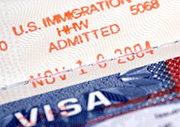FAMILY-BASED IMMIGRATION
Family is the most important value for American society. The United States support family and promote its unity. Family-based immigration is one of the leading ways to get a US green card. Many people become permanent residents through their family members. Below you can find information about eligibility requirements and application process.
In general, to apply for a green card via family you must fall under one of the following categories:
- · An immediate relative of a US citizen. American immigration law defines immediate relatives as spouses, unmarried children under 21 years old, and parents;
- · A US citizen’s family member of one of the preference categories including sisters and brothers of an American citizen over the age of 21, unmarried children over 21, and married children of any age;
- · A green card holder’s family member. This category is limited to a petitioner’s spouse and their unmarried children;
- · Special category members (a battered spouse or child (VAWA), a K nonimmigrant, a V nonimmigrant or a widow(er) of a U.S. Citizen, a person born to a foreign diplomat in the United States).
A US citizen’s immediate relatives are a special priority category. The USA does not have any limits on the number of visas available for this category. This means that waiting time is minimal.
On the contrary, non-immediate family members can be sponsored via ‘preference category’. The US Congress limits the number of visas available for this category so there is usually a waiting period.
If you are currently inside the United States, the application process for you usually consists of two steps:
- a US citizen or a US permanent resident family member must file Form I-130 for you. The form must have a status ‘approved’ or ‘pending’;
- once the petition is approved, you may file Form I-485 for Adjustment of Status. Adjustment of Status is the process you have to go through to become a permanent resident.
Immediate relatives of a US citizen have a one-step option available for them. You can file Form I-485 at the same time your American family member files I-130.
While outside the United States you can apply for permanent residence via consular processing. It involves USCIS working together with the Department of State and issuing you an immigrant visa. You can then travel to the United States on that visa. When admitted at a US port of entry you will officially become a permanent resident and get a green card.
Things to remember about
Turning 21 years of age. Coming out of age means changing your ‘family preference category’. A child of a US citizen who has turned 21 can no longer apply for a green card as an immediate relative. He or she becomes a ‘first preference’ son or daughter. The same rule applies to a permanent resident’s children who will then fall under category of an ‘unmarried son or daughter’. These changes may result in a significant delay in green card or visa processing.
The Child Status Protection Act (CSPA). In some situations, the CSPA may allow you to keep you ‘child’ status even if you have turned 21 years of age.
Getting married. If a US citizen’s child under the age of 21 or their unmarried son or daughter gets married, they can not retain their status. Their preference category will change that may result in a significant delay in green card or visa processing.
Permanent Resident Relative Becomes a US Citizen. Alternatively if a green card holder who has filed a petition for you becomes an American citizen, your preference category also changes and you can get a visa sooner.






